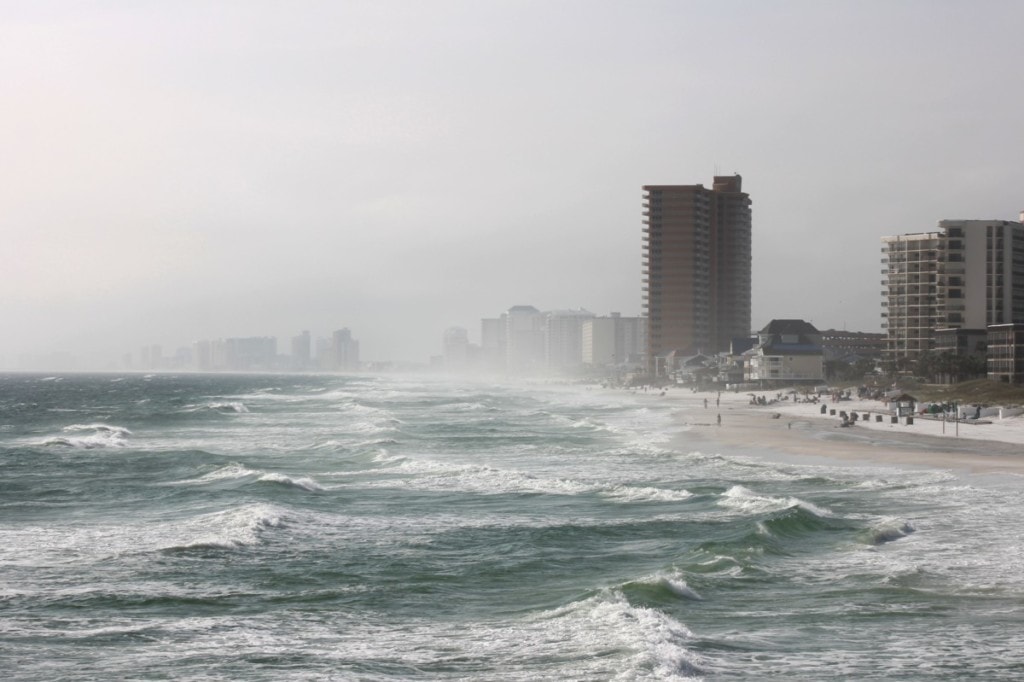On top of the Coronavirus pandemic, it’s also hurricane season once again for many in the south and eastern part of the U.S., especially if you live in Miami, Fort Lauderdale, or West Palm Beach, FL. Though hurricanes have been known to venture north as far as Maine, or West into Texas. If you live or you’re planning on moving to this large part of the U.S. that is impacted by hurricanes, it means your home and other personal property could be at risk for damage from extreme winds, rain, hail, and lightning. Luckily, we have you covered with our list on how to prepare your house for a hurricane, before and after the storm.
A hurricane is an intense cyclone of thunderstorms, characterized by torrential downpours and violent winds that can even turn tornadic. They are measured by category on the Saffir-Simpson scale, which we have listed below.

Hurricanes that are considered “minor” may be classified in one of two ways:
- Category 1, with winds reaching 74-95 miles per hour (mph)
- Category 2, with 96-110 mph winds
Hurricanes that are considered “major” include:
- Category 3 (111-129 mph winds)
- Category 4 (130-156 mph winds)
- Category 5 (winds of 157 mph or stronger)
Tropical storms, including hurricanes at any level, can cause significant damage to your home and property, from missing shingles and fence posts to collapsed roofs and walls. Knowing what to expect and being prepared for the storm can make all the difference. Know how to protect your home from hurricane damage before the storm hits landfall, and then how to inspect, report, and repair your home once the skies have cleared.

How to prepare your home before the hurricane
Being prepared for emergency weather ahead of time will not only help keep you and your family safe during a hurricane but will also save you a lot of headaches after the storm has passed. Here are some tips to help you prepare your home for a hurricane.
1. Make a Hurricane Emergency Kit
Prepare and stow a hurricane emergency kit long before a storm is announced. The kit should include, but not limited to:
- bottled water
- non-perishable food
- a first aid kit and any supplies your family or pets may need
- extra clothes
- flashlights
- a radio
- Batteries
- disposable dishes
Keep these supplies in a specific spot in your home that everyone can get to quickly and easily. When a storm is announced, double-check any emergency electronics to ensure they work, and keep spare batteries handy.
2. Check your homeowner’s insurance
Do some research into your homeowner’s insurance, because many standard plans may not cover damage incurred from hurricanes or floods. If your current homeowner insurance doesn’t cover your home, then you can get insurance through Floods Smart, which is a national program managed by the Federal Emergency Management Agency (FEMA). You can purchase coverage for both your property and its contents. Take particular note of the limitations of your coverage. For example, some policies do not cover mold and mildew damage. Keep in mind that even if you are in a low or moderate-risk flooding area, adding flood coverage is still a good idea.
3. Maintain your outdoor areas
Cut tree branches down to no more than four or five feet long, so they do not fall and damage power lines or your property. Empty your gutters, so water has a place to drain. Pick up any debris that may be in your yard. Ensure all trimmings and debris are properly disposed of and don’t fall into the street where they can affect traffic or stormwater drainage.
4. Get ready when the storm is announced
When a storm is headed your way, put up your hurricane shutters or cover windows and doors with pieces of 5/8-inch plywood to prevent them from breaking. Fill up your car’s gas tank and reinforce the garage door. Turn your refrigerator and freezer to their coldest settings and use a cooler when possible to keep food cold during a power outage. Store important documents such as birth certificates, Social Security cards, and passports in a watertight container. It is also wise to unplug all non-essential appliances and electronics.
5. Stock Up On Sandbags
Sandbags can be used to line your house to protect it from minor flooding. Some cities will even supply their residents with bags, sand, and shovels in the event of a hurricane warning. Emergency experts suggest sandbags as a last-minute safeguard but recommend keeping potting soil or expandable foam on-hand as more effective protection in the event of a major storm.
6. How to prepare your pool for a hurricane
If your home has a pool, you’ll need some additional preparation. Items around the pool, like furniture, toys, and skimmer lids should be brought inside to avoid becoming projectiles during the hurricane. Some opt to throw their furniture into the pool, but it can actually cause damage to the pool’s finish, so be careful when submerging items if you choose to do so. Turn off the gas supply and the filter pump and store the filter indoors during the storm if you expect significant water damage. Moreover, whatever you do, don’t drain the pool water. The weight of the water acts as an anchor and removing it could cause the pool to pop out of the ground.
How to address your home’s needs after the hurricane
After a hurricane has passed, many people feel overwhelmed by tasks like cleaning up and filing insurance claims. Taking action as quickly as possible (or as soon as it is safe to) can prevent further damage from occurring, and will save you money and stress in the long run.
7. Be cautious in your home as you look around
Listen to the radio or check local news for official weather updates, bearing in mind that there is still potential for flooding and extended rainfall. If you evacuated your home, return only when government officials confirm it is safe, and be wary of flooded roads and washed-out bridges. Check your home for damage, and take photos and videos of both the building and its contents to report to the insurance company. Be cautious while inspecting and wear protective clothing. Use flashlights instead of candles as a safety precaution.
Look out for fallen power lines, gas leaks, and structural damage to your home before you enter. These items will need immediate professional attention. Check for local updates about cleanup efforts in your area.
8. Report property damages caused by the hurricane
You should check for property damage as quickly as possible and report it to your insurance company. Many companies have toll-free numbers that can help you submit a claim, so don’t be intimidated if you’re unsure where to start. If you are unable to stay in your home, make sure your insurance agent knows where you’re staying and how to contact you.
If you can safely do so, make efforts to protect your home from further damage. Cover openings in the roof and exterior walls or windows with plywood or plastic. Severe damage may require the help of a professional contractor, and if so, keep all receipts from the repairs. Try to separate out your damaged personal property to help the claims adjuster make an accurate inventory and speed up your claim settlement.
9. Call a professional to help with repairs and alterations
As you begin the repairs to your home and prepare for Mother Nature’s next excursion, consider calling a professional to help you with more major alterations. Fasten the roof to the walls with hurricane straps, and ensure roof sheathing is properly installed and end gables are securely fastened to the rest of the roof. Strengthen existing garage doors to help with wind resistance and secure double-entry doors at the top and bottom.
10. Check for outside property damage caused by the storm
There may also be damage to your landscape that will need to be addressed. Damaged trees may need to be removed while others can be salvaged. For example, if the storm has caused a tree to lean toward a house or power line, exposed major roots, or severed large branches, the tree will likely need to come down. Consult a professional if you are not confident in removing or pruning a wind-damaged tree.
Hurricanes can be unpredictable and violent, but that doesn’t mean your property has to take the hit. Knowing how to prepare your house for a hurricane can not only help keep your home safe but can also save you the stress and financial burden of extensive home repairs. If you do need to make repairs beyond what your insurance is willing to cover, taking an equity line of credit on your home may be an option or refinancing your home and building in the costs of the repairs into your new home loan. Just make sure you use a mortgage payment calculator to help determine what your new monthly mortgage payment will be and talk with your lender before proceeding. The most important step in hurricane preparation is ensuring the safety of your family and yourself.
The post 10 Tips on How to Prepare Your House for a Hurricane appeared first on Redfin | Real Estate Tips for Home Buying, Selling & More.
